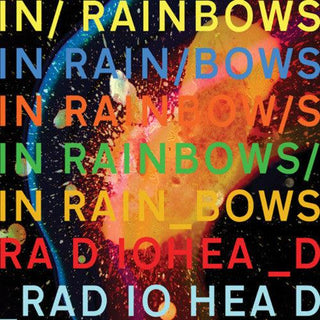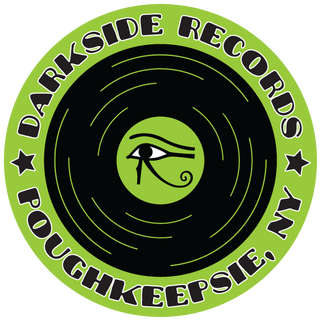Artur Pizarro- Saint-Saens: Music for Two Pianos

SOMM Recordings is pleased to present Music for Two Pianos by the French virtuoso pianist and composer, Camille Saint-Saens (1835 - 1921), whose output for solo and duo pianists totals almost 200 compositions. The programme on this release comprises original works for two pianos alongside selections transcribed by Saint-Saens from his orchestral pieces. The featured pianists, Artur Pizarro and Ludovico Troncanetti, made their piano duo debut in Lisbon in 2023 with a recital featuring the repertoire on this album. The artists share a love of performing two-piano and four-hands repertoire, and they have plans to continue their collaboration with further projects on stage and in the studio. The renowned Portuguese pianist, Artur Pizarro, winner of the Leeds International Piano Competition amongst others, performs internationally as a recitalist, chamber musician, and soloist with the world's leading orchestras and conductors. The Italian pianist, Ludovico Troncanetti, is a graduate of the Milan Conservatory and is actively involved in reviving the works of the Russian pianist and composer Anton Rubinstein. The recital opens with Saint-Saens' transcription of Le Rouet d'Omphale (Omphale's Spinning-Wheel), the most famous of his four symphonic poems inspired by Greco-Roman mythology. Both this work and the Marche heroique had their premiere in the original version for two pianos, the march seeming to presage the war that broke out between France and Prussia in July 1870. The first and most substantial of Saint-Saens' original two-piano works is a set of Variations on a Theme of Beethoven, based on the Trio section of the Minuet from Beethoven's Piano Sonata No. 18, the Hunt. The eight variations plus a fugue, presto, and coda require considerable ensemble skill from the pianists to pull off. From 1886-the year of the Organ Symphony and The Carnival of the Animals-comes Saint-Saens' tribute to Chopin, whom he had passionately admired since he was a student. Saint-Saens vividly evokes the spirit of the Polonaise without actually quoting any of Chopin's own works inspired by the national dance of his native Poland. Saint-Saens frequently wintered in North Africa; in fact he died in Algiers in December 1921. During an 1889 trip to Las Palmas in Northern Africa, he began composing his Scherzo for two pianos. It's a work with echoes of Debussy, Ravel, and Satie, which he cautioned would be difficult to read at sight and would require much practice. Caprice arabe, along with the symphonic poem Africa and the "Egyptian" Piano Concerto, is one of a trio of piano compositions inspired by Saint-Saens' journeys to North Africa. The recital ends with another caprice, the virtuosic Caprice heroique, which leans more towards being capricious than heroic, despite it's powerful opening and fugue-like ending.
SOMM Recordings is pleased to present Music for Two Pianos by the French virtuoso pianist and composer, Camille Saint-Saens (1835 - 1921), whose output for solo and duo pianists totals almost 200 compositions. The programme on this release comprises original works for two pianos alongside selections transcribed by Saint-Saens from his orchestral pieces. The featured pianists, Artur Pizarro and Ludovico Troncanetti, made their piano duo debut in Lisbon in 2023 with a recital featuring the repertoire on this album. The artists share a love of performing two-piano and four-hands repertoire, and they have plans to continue their collaboration with further projects on stage and in the studio. The renowned Portuguese pianist, Artur Pizarro, winner of the Leeds International Piano Competition amongst others, performs internationally as a recitalist, chamber musician, and soloist with the world's leading orchestras and conductors. The Italian pianist, Ludovico Troncanetti, is a graduate of the Milan Conservatory and is actively involved in reviving the works of the Russian pianist and composer Anton Rubinstein. The recital opens with Saint-Saens' transcription of Le Rouet d'Omphale (Omphale's Spinning-Wheel), the most famous of his four symphonic poems inspired by Greco-Roman mythology. Both this work and the Marche heroique had their premiere in the original version for two pianos, the march seeming to presage the war that broke out between France and Prussia in July 1870. The first and most substantial of Saint-Saens' original two-piano works is a set of Variations on a Theme of Beethoven, based on the Trio section of the Minuet from Beethoven's Piano Sonata No. 18, the Hunt. The eight variations plus a fugue, presto, and coda require considerable ensemble skill from the pianists to pull off. From 1886-the year of the Organ Symphony and The Carnival of the Animals-comes Saint-Saens' tribute to Chopin, whom he had passionately admired since he was a student. Saint-Saens vividly evokes the spirit of the Polonaise without actually quoting any of Chopin's own works inspired by the national dance of his native Poland. Saint-Saens frequently wintered in North Africa; in fact he died in Algiers in December 1921. During an 1889 trip to Las Palmas in Northern Africa, he began composing his Scherzo for two pianos. It's a work with echoes of Debussy, Ravel, and Satie, which he cautioned would be difficult to read at sight and would require much practice. Caprice arabe, along with the symphonic poem Africa and the "Egyptian" Piano Concerto, is one of a trio of piano compositions inspired by Saint-Saens' journeys to North Africa. The recital ends with another caprice, the virtuosic Caprice heroique, which leans more towards being capricious than heroic, despite it's powerful opening and fugue-like ending.





